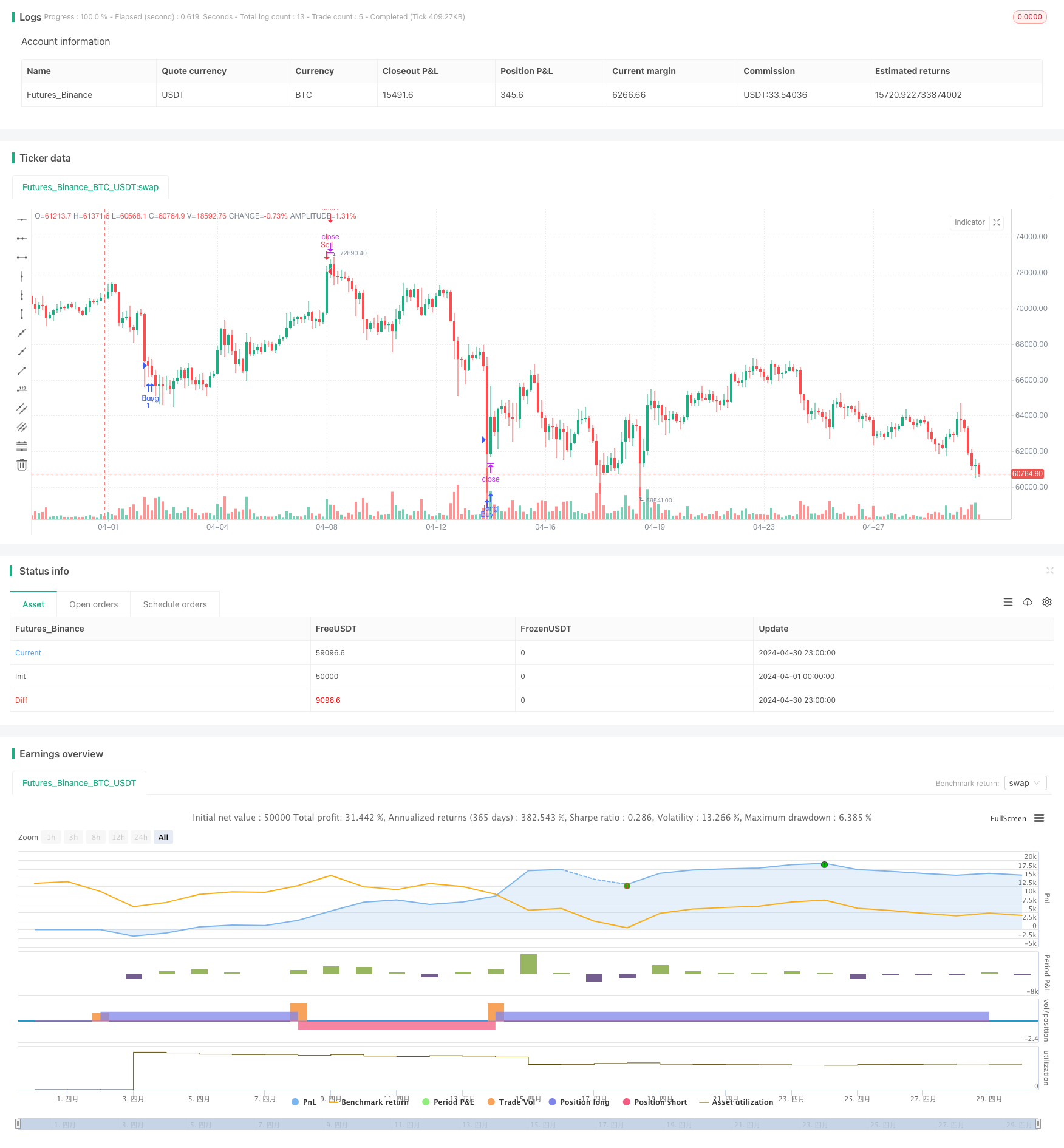
概述
该策略利用相对强弱指数(RSI)和简单移动平均线(SMA)来识别市场中潜在的均值回归机会。当RSI低于买入阈值且价格低于SMA时,会产生买入信号;当RSI高于卖出阈值且价格高于SMA时,会产生卖出信号。该策略还设置了止损和止盈水平,以管理交易风险和锁定利润。
策略原理
该策略的核心原理是均值回归概念,即价格在极端水平时往往会回归到其平均值附近。通过使用RSI指标来衡量价格的超买和超卖状态,并结合SMA作为价格的参考基准,该策略试图捕捉价格偏离均值过远后的回归机会。
具体而言,该策略使用以下步骤: 1. 计算RSI指标和SMA指标。 2. 检查是否满足买入条件:RSI低于买入阈值(默认为30)且价格低于SMA。 3. 检查是否满足卖出条件:RSI高于卖出阈值(默认为70)且价格高于SMA。 4. 如果持有多头仓位,计算止损和止盈价位,如果价格触及止损或止盈,平仓。 5. 如果满足买入信号,开多头仓位;如果满足卖出信号,开空头仓位。
策略优势
- 均值回归策略可以在价格偏离均值过远时捕捉反转机会,从而获利。
- 使用RSI指标可以有效识别价格的超买和超卖状态,提高交易信号的可靠性。
- 结合SMA作为价格基准,可以过滤掉一些噪音信号,提高交易质量。
- 设置止损和止盈水平,可以有效管理交易风险,保护账户资金安全。
策略风险
- 均值回归策略在趋势性市场中表现可能不佳,因为价格可能持续偏离均值而不回归。
- RSI和SMA参数的选择会影响策略表现,不当的参数设置可能导致错误信号和亏损。
- 固定百分比的止损和止盈可能无法适应不同的市场波动状况,导致止损过早或利润放大不足。
策略优化方向
- 考虑使用自适应的止损和止盈方法,如基于平均真实范围(ATR)的动态止损,以更好地适应市场波动。
- 尝试不同的RSI和SMA参数组合,通过回测和优化找到最佳参数设置。
- 加入其他技术指标或市场情绪指标,以提高交易信号的可靠性和稳健性。
- 引入仓位管理和风险控制措施,如基于风险的仓位调整或动态权重分配,以优化策略的风险收益特性。
总结
该相对强弱指数均值回归策略利用RSI和SMA来捕捉价格偏离均值后的回归机会。它具有简单易懂、适应性强等优点,但在趋势性市场中表现可能欠佳,并且依赖于参数选择。通过优化止损止盈方法、参数设置、引入其他指标和风险管理措施,可以进一步提升该策略的稳健性和盈利潜力。
策略源码
/*backtest
start: 2024-04-01 00:00:00
end: 2024-04-30 23:59:59
period: 3h
basePeriod: 15m
exchanges: [{"eid":"Futures_Binance","currency":"BTC_USDT"}]
*/
//@version=5
strategy('Mean Reversion with Tight Stop Loss', overlay=true)
// Define parameters
rsiLength = 14
rsiThresholdBuy = 30
rsiThresholdSell = 70
smaPeriod = 20
stopLossPercentage = 0.5 // 0.5% stop loss
profitTargetPercentage = 1 // 1% profit target
// Calculate indicators
rsi = ta.rsi(close, rsiLength)
sma = ta.sma(close, smaPeriod)
// Entry conditions
buySignal = rsi < rsiThresholdBuy and close < sma
sellSignal = rsi > rsiThresholdSell and close > sma
// Exit conditions
if strategy.position_size > 0
stopLoss = strategy.position_avg_price * (1 - stopLossPercentage / 100)
takeProfit = strategy.position_avg_price * (1 + profitTargetPercentage / 100)
if close <= stopLoss or close >= takeProfit
strategy.close('Exit', comment='Stop Loss / Take Profit')
// Execute trades
if buySignal
strategy.entry('Buy', strategy.long)
if sellSignal
strategy.entry('Sell', strategy.short)
相关推荐